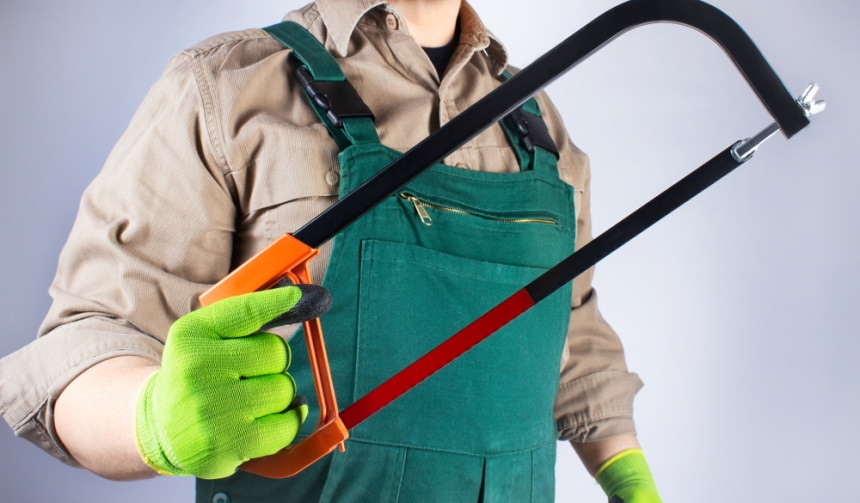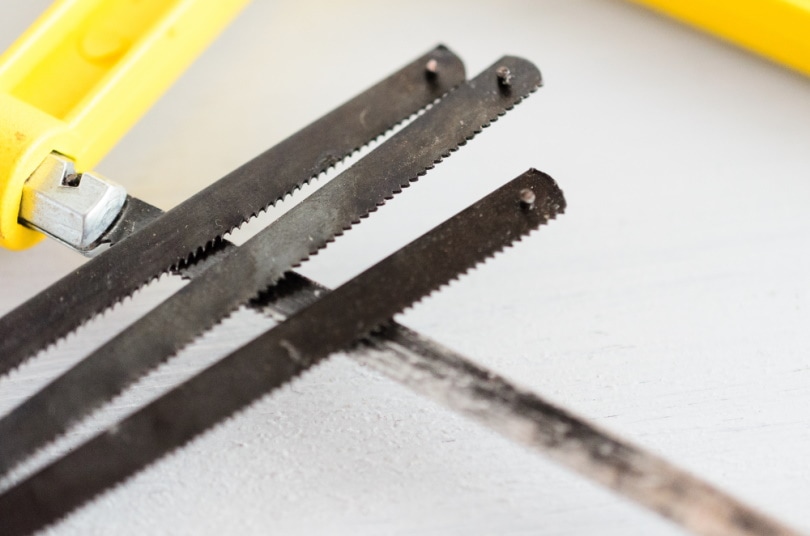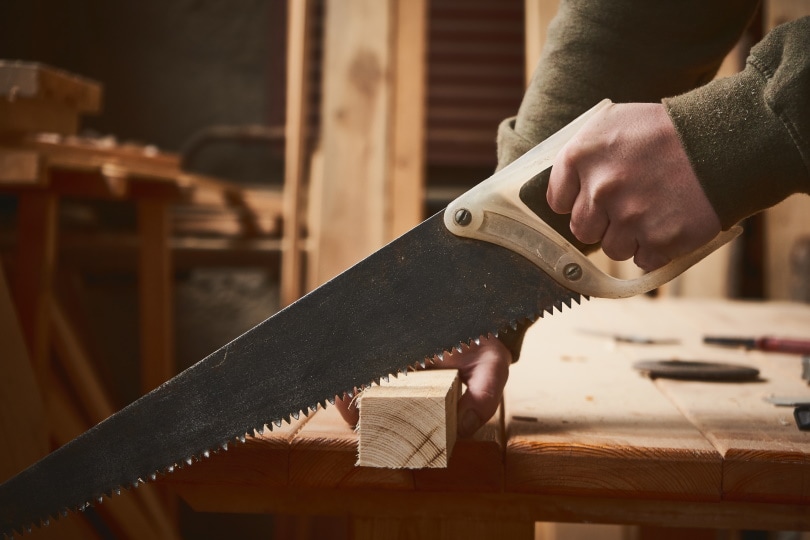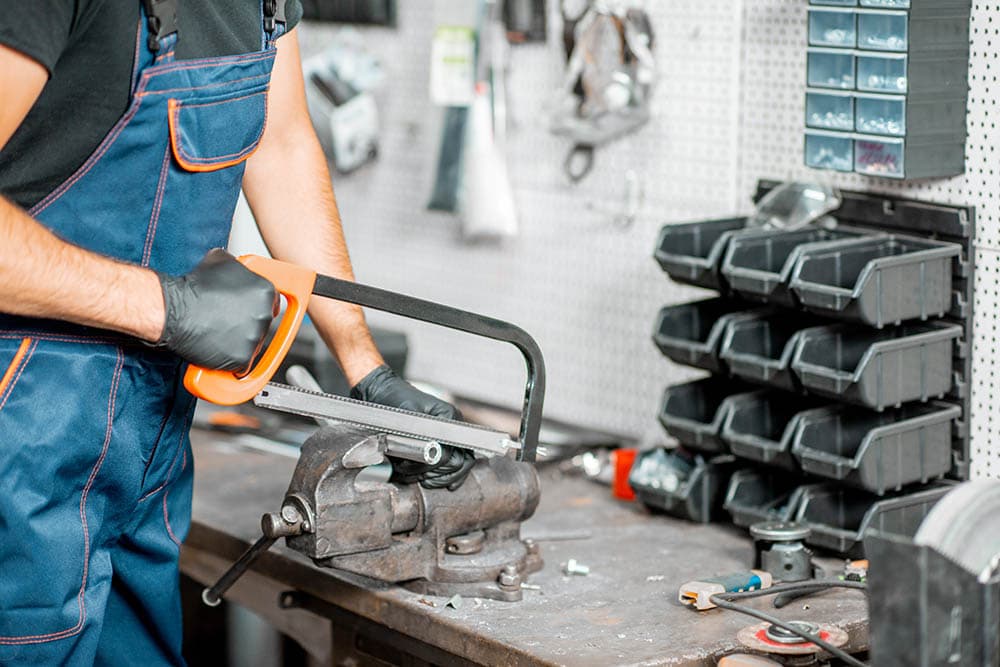Can a Hacksaw Cut Wood? Types, Tips & Suggestions
-
Shea Cummings
- Last updated:

There’s no denying how useful of a tool a hacksaw is. They are an excellent tool for the average DIYer and a necessary one for most plumbers and electricians. However, they are not all-purpose saws.
While they are perfect for cutting most metal and plastic materials, they are not ideal for cutting wood. They will work in a pinch if you have the right blade, but they are simply not the best tool for the job.
Different Types of Hacksaw Blades
If a hacksaw is the only type of saw you have, then it’s a good idea to have a couple of different blades in your kit. The nice thing about a hacksaw blade is that it’s easy to change. For most saws, it’s a matter of loosening a tensioner knob and unhooking the blade.
Other than the length of the blade, the only real difference between them is how many teeth per inch (TPI) they have. The TPI determines two things: how quickly and well the blade will cut and the material it can cut.
Depending on the manufacturer, hacksaw blades are typically available from 12–32 TPI. Essentially the more TPI, the slower but nicer it will cut. Also, more TPI means it will usually cut more rigid material better.
Now, for cutting wood, even 12 TPI is a little much. It will be extremely slow, and you’ll spend more time cleaning the teeth out than cutting. However, many bow saw blades can be modified to fit a hacksaw and are available in much lower TPI configurations like five or six. If you must use your hacksaw for wood, modifying a bow saw blade is your best bet.

Best Saws for Cutting Wood
Your best option if you plan to do any wood cutting is to buy a tool that is meant for the job. You have many options to choose from. And each of them has different advantages and disadvantages.
- Handsaw: If you only need to occasionally cut a small amount of wood. A hand saw is probably adequate. This will also be your least expensive option. However, it’s 100% manual, so consider that.
- Miter Saw: Several types of miter saws are available with different-sized blades or other features like sliding arms or laser lines for precise cuts. These are great for cutting dimensional lumber like 2x4s, for example. However, a miter saw is stationary, so that’s a little bit limiting.
- Circular Saw: These saws are often called “skill saws.” They have a similar-sized round blade, just like a miter saw. However, they are handheld and a little bit more maneuverable. So they are great for long cuts on things like plywood in addition to dimensional lumber. One downside is that it takes more effort to get a straight cut than a miter saw.
- Reciprocating Saw: Also known as “Sawzalls,” these are good all-around saws. The reason for their flexibility is that you can get blades specifically made for wood, metal, or both. However, they will not make nice, clean cuts. So they are better suited for a task that doesn’t require precision or a nice finish.
- Table Saw: The table saw is a staple in every woodworker’s shop. These saws are super flexible. Not only are they capable of doing long, straight cuts called “rips,” but they can also be used to crosscut dimensional lumber. With the right accessories and knowledge, there’s not much you can’t cut with a table saw.

Correct Tool Choice and Safety
Just because a tool can be used to do a certain job that it’s not designed for in a pinch doesn’t mean you should. As a general rule, you increase the danger aspect exponentially if you use tools for tasks they are not meant for.
This isn’t to say a hacksaw becomes a deadly tool if you use it to cut a dead branch of the tree in the backyard. But if possible, you should always try to have the proper tools on hand.
It doesn’t take much to use a saw safely. Other than knowing the proper function and safe use of the particular saw, here are a couple of universal saw safety tips:
- Always wear eye protection
- Wearing gloves is a good idea
- Hearing protection when using a power saw (table saw, miter saw, circular saw, etc.)
- Always use a “push stick” (table saw)
- Always pay attention to the task at hand to avoid a slip that results in missing digits

Final Thoughts
In a pinch, the hacksaw will cut wood, especially if you have a suitable blade on it. However, if possible, you’re better off going with one of several other saw options if you have any amount of wood to cut. A great all-around saw to have for wood is a circular saw or table saw.
Featured Image Credit: breakermaximus, Shutterstock
Contents
